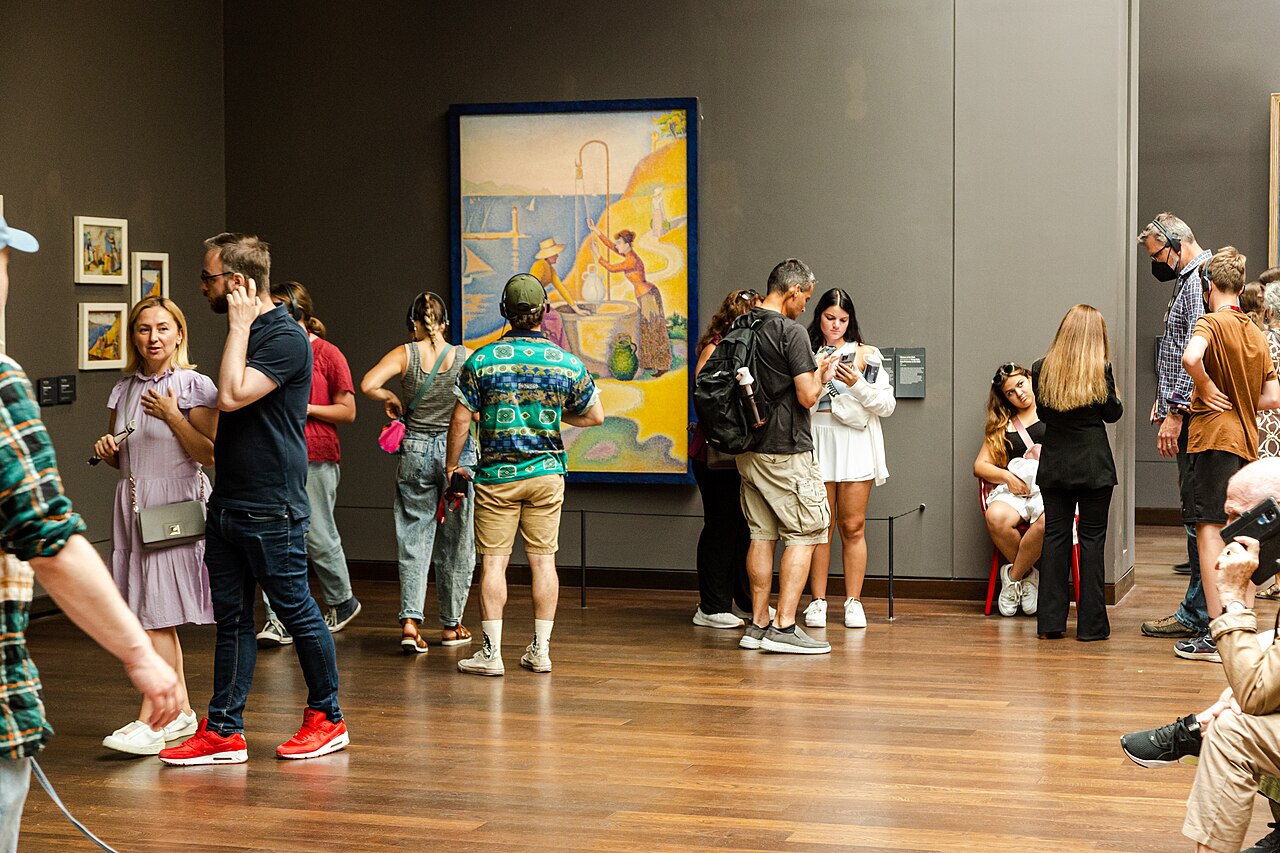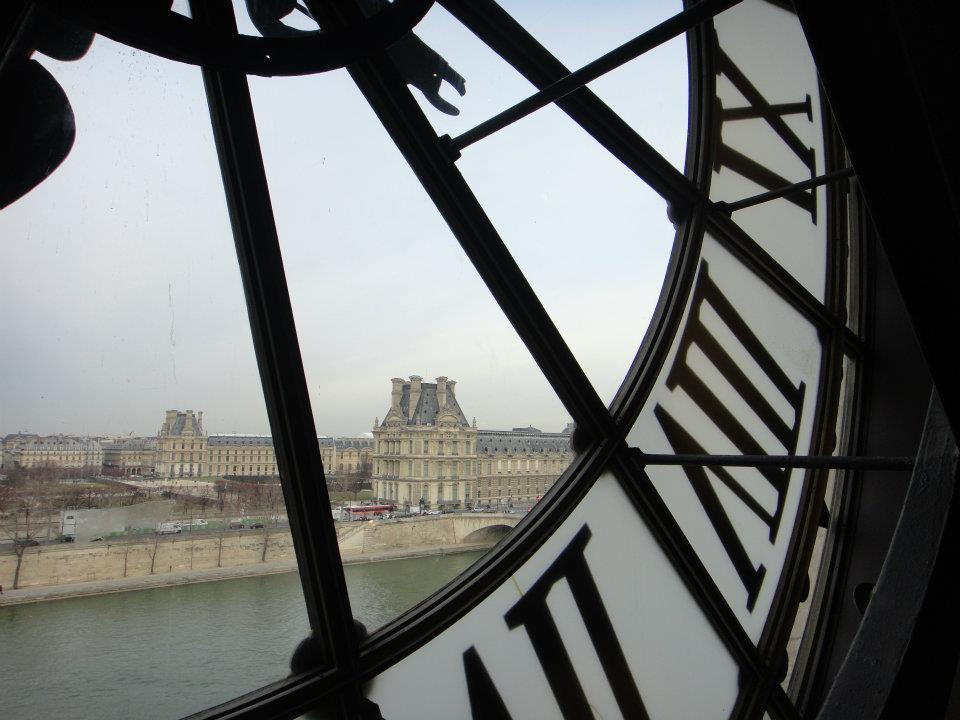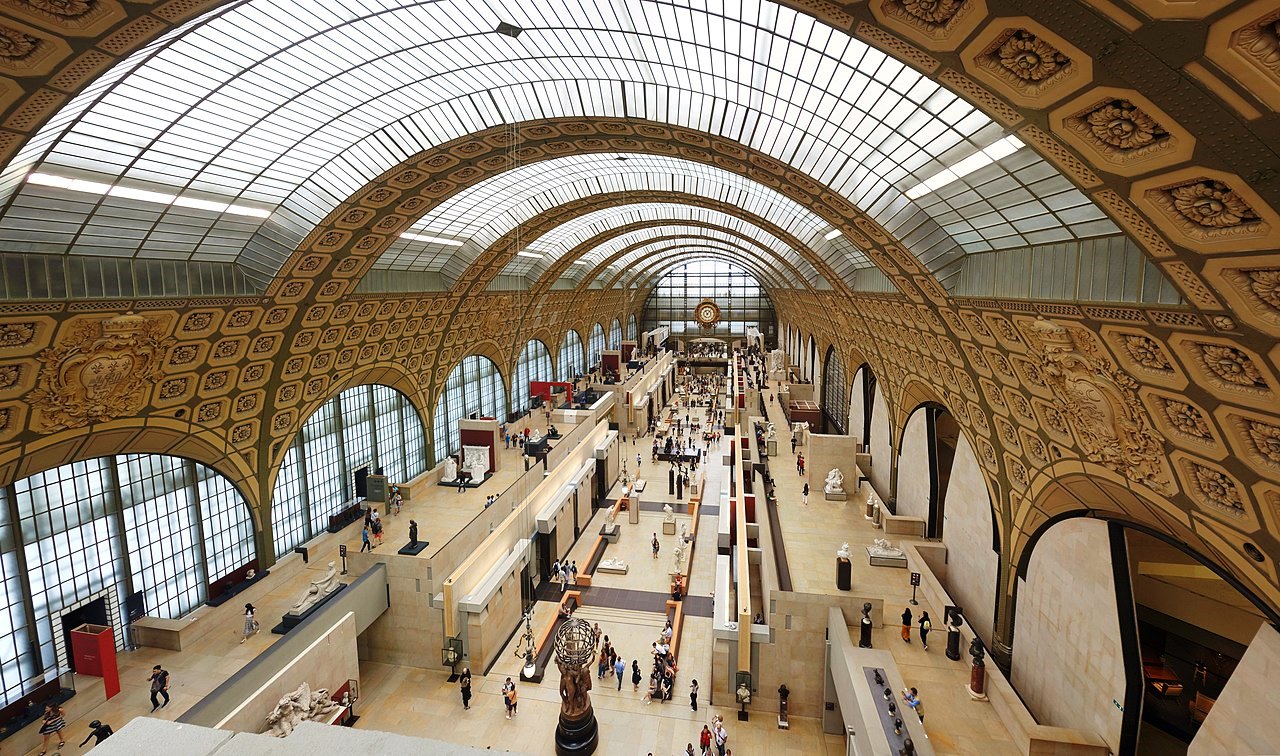Standing proudly on the Left Bank of the Seine, opposite the Tuileries Gardens, the Musée d’Orsay in Paris is more than just a museum – it’s a time capsule of 19th-century art, culture, and history. Housed in a stunning Beaux-Arts train station built for the 1900 World’s Fair, this light-filled space holds the largest collection of Impressionist and Post-Impressionist masterpieces in the world.

From Monet’s shimmering water lilies to Van Gogh’s expressive brushwork and Degas’ delicate dancers, Orsay captures a revolutionary era in art where light, movement, and emotion took center stage. It’s the perfect destination for anyone seeking a deeper connection to Parisian creativity and French history.
A Train Station Turned Temple of Art
Ever wondered why it’s called the Musée d’Orsay? The museum takes its name from the Gare d’Orsay, the train station it once was. This terminal station was part of the Paris–Orléans railway line and was named after the town of Orsay, from where the trains originally departed.
The building itself is a masterpiece. Originally constructed as the Gare d’Orsay railway station and hotel, it welcomed visitors arriving in Paris for the 1900 Exposition Universelle. Designed by architect Victor Laloux, the station was a symbol of modernity, with iron, glass, and stone blended in harmonious grandeur.

After serving various purposes – including as a mail depot and film set – the site was transformed into a museum in the 1980s. The Musée d’Orsay officially opened in 1986, preserving the station’s grand architecture while giving it new life as a sanctuary for 19th- and early 20th-century art.
What to See Inside the Musée d’Orsay

- Impressionist & Post-Impressionist Masterpieces: Works by Claude Monet, Pierre-Auguste Renoir, Edgar Degas, Camille Pissarro, Paul Cézanne, Vincent van Gogh, and Paul Gauguin form the heart of the museum.
- Decorative Arts & Sculpture: Don’t miss the Art Nouveau furniture and sculptures by Rodin, Claudel, and others.
- The Great Clock: One of Orsay’s most Instagrammed features, this giant clock window offers sweeping views of Paris.
- The Grand Nave: The former train hall now serves as the central gallery – a dramatic space for large sculptures and themed exhibitions.
- Special Exhibitions: Orsay regularly hosts temporary exhibitions on themes from Symbolism to photography to modern design.
Interesting Facts About the Musée d’Orsay

- The museum holds over 6,000 works of art in its permanent collection.
- The transformation from station to museum took nearly 10 years.
- The space has been featured in films like Hugo and Amélie.
- Van Gogh’s famous “Starry Night Over the Rhône” and “Bedroom in Arles” are here (not to be confused with Starry Night at MoMA).
- The main clock was once used to regulate train schedules and now frames the city through time itself.
Visiting Information

📍 Location: Esplanade Valéry Giscard d’Estaing, 75007 PARIS
🌐 musee-orsay.fr
🕒 Opening Hours:
- Tuesday to Sunday: 9:30 AM – 6:00 PM
- Thursdays: open until 9:45 PM
- Closed on Mondays
🎟️ Tickets:
- Full price: €16
- Discounted: €13 (under 26 EU residents free)
- Free on the first Sunday of each month
- Buy online to skip the line: Tickets
💡 Tip: Arrive early or late afternoon to avoid the biggest crowds. Don’t forget to check for current exhibitions.
Nearby Attractions

Louvre Museum – Cross the Seine to visit the world’s most famous art museum
Eiffel Tower – A short walk away through the 7th arrondissement
Musée de la Légion d’Honneur – Right next door and often overlooked, this museum showcases the history of France’s highest honors
Musée d’Orsay and the Paris For You App

📲 Use the Paris For You app to plan your visit:
- Get offline directions
- Learn more about museum
- Discover café and boutique tips nearby
- Available in 26 languages
- Download:
- 📥 Download on Android
- 📥 Download on iPhone
Whether you’re a first-time visitor or returning to Paris with new eyes, the Musée d’Orsay offers a rich and luminous journey through the creative explosion that shaped modern art. Step off the streets and into a station where masterpieces still travel through time.

